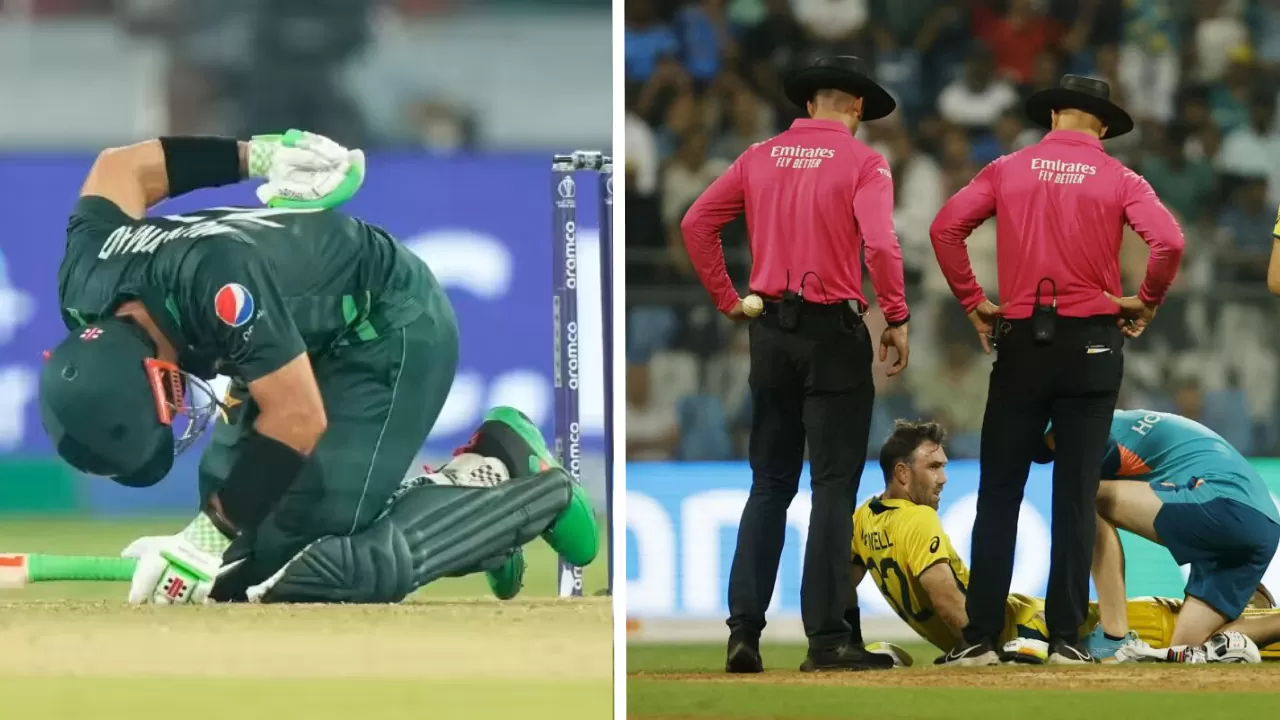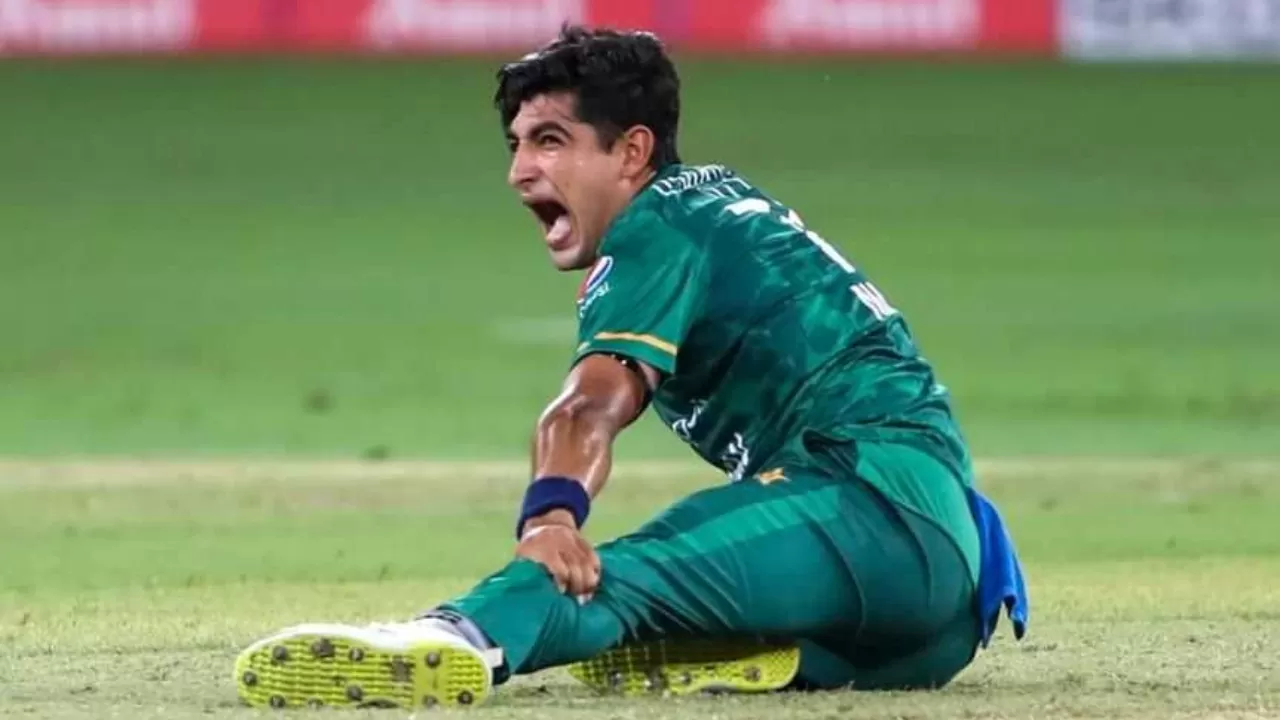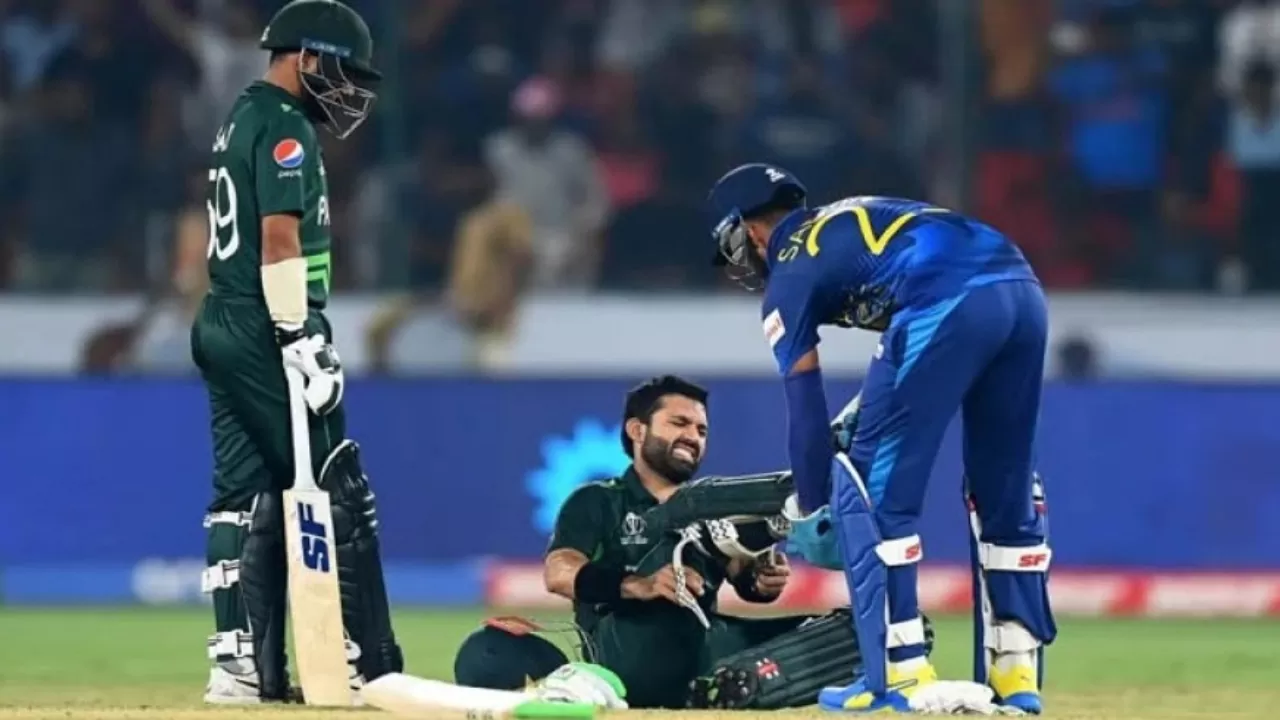Introduction
Cramps are involuntary and painful contractions of the muscles that can affect anyone, especially athletes who engage in intense physical activity. Cricketers are no exception, as they often have to endure long hours of playing in hot and humid conditions, which can increase the risk of cramps. Cramps are one of the most common injuries in cricket, affecting both batsmen and bowlers alike.
In this article, we will explore the causes, prevention, and treatment of cramps in cricketers, and how they can affect their performance and health. We will also look at some recent examples of cricketers who suffered from cramps during important matches, and how they dealt with them.

What Causes Cramps in Cricketers?
Many factors can contribute to cramps in cricketers, but the most common ones are:
- Dehydration: Cricketers lose a lot of fluids and electrolytes through sweating, which can lead to dehydration and an imbalance of minerals in the body. This can affect the normal functioning of the muscles and nerves and trigger cramps.
- Fatigue: Cricketers exert a lot of energy and stress on their muscles, especially during long innings or spells. This can cause muscle fatigue and damage, which can make them more prone to cramps.
- Poor nutrition: Cricketers need to have a balanced diet that provides them with enough carbohydrates, proteins, fats, vitamins, and minerals to fuel their body and repair their muscles. A lack of any of these nutrients can impair their muscle function and cause cramps.
- Environmental factors: Cricketers often play in hot and humid climates, which can increase their body temperature and sweat rate. This can also lead to dehydration and electrolyte loss, as well as heat exhaustion and heat stroke, which can cause cramps.
- Genetic factors: Some cricketers may have a genetic predisposition to cramps, due to their muscle fiber type, enzyme activity, or nerve sensitivity. This can make them more susceptible to cramps than others, regardless of their hydration and nutrition status.

How to Prevent Cramps in Cricketers?
Cramps can be prevented by following some simple tips, such as:
- Stay hydrated: Cricketers should drink plenty of fluids before, during, and after the game, to replenish their water and electrolyte levels. They should also avoid alcohol, caffeine, and sugary drinks, which can dehydrate them and worsen their cramps.
- Eat well: Cricketers should have a balanced diet that provides them with enough carbohydrates, proteins, fats, vitamins, and minerals to support their energy and muscle needs. They should also avoid spicy, fatty, and processed foods, which can upset their stomach and cause cramps.
- Warm-up and cool-down: Cricketers should perform a proper warm-up and cool-down routine before and after the game, to prepare their muscles and joints for the activity and prevent injuries. They should also stretch their muscles regularly, to improve their flexibility and blood flow, and reduce their cramp risk.
- Rest and recover: Cricketers should get enough sleep and rest between games, to allow their muscles and nerves to recover and heal. They should also avoid overtraining and overexertion, which can cause muscle fatigue and damage, and increase their cramp risk.
- Wear appropriate clothing: Cricketers should wear loose-fitting, breathable, and light-colored clothing, to keep their body cool and comfortable during the game. They should also wear proper shoes and socks, to prevent friction and blisters, which can cause cramps.

How to Treat Cramps in Cricketers?
Cramps can be treated by following some simple steps, such as:
- Stop the activity: Cricketers should stop the activity that caused the cramp, and rest the affected muscle. They should not resume the activity until the cramp subsides, to avoid further damage and pain.
- Stretch the muscle: Cricketers should gently stretch the cramped muscle, to relieve the tension and spasm. They should hold the stretch for 15 to 30 seconds, and repeat it several times until the cramp eases.
- Massage the muscle: Cricketers should lightly massage the cramped muscle, to improve blood circulation and relax the muscle fibers. They can use their fingers, a foam roller, or a massage ball, to apply gentle pressure and knead the muscle.
- Apply heat or cold: Cricketers can apply a heat pack or a cold pack to the cramped muscle, to reduce inflammation and pain. They should wrap the pack in a towel, and apply it for 10 to 15 minutes, several times a day, as needed.
- Drink fluids and eat snacks: Cricketers should drink fluids and eat snacks that contain water and electrolytes, such as water, sports drinks, fruit juices, fruits, nuts, or energy bars, to rehydrate and replenish their bodies and prevent further cramps.
- Take medication: Cricketers can take over-the-counter painkillers, such as ibuprofen or paracetamol, to ease the pain and discomfort caused by cramps. However, they should consult their doctor before taking any medication, and follow the dosage and instructions carefully, to avoid any side effects or complications.

How Do Cramps Affect Cricketers’ Performance and Health?
Cramps can hurt cricketers’ performance and health, such as:
- Reduced performance: Cramps can impair cricketers’ ability to run, bat, bowl, field, or catch, and affect their accuracy, speed, power, and endurance. This can reduce their performance and contribution to the team, and increase their risk of losing the game.
- Increased injury risk: Cramps can make cricketers more vulnerable to other injuries, such as strains, sprains, tears, or fractures, due to their reduced muscle function and coordination. This can worsen their condition prolong their recovery time, and affect their career and prospects.
- Decreased quality of life: Cramps can cause cricketers a lot of pain and discomfort, and affect their mood, sleep, and daily activities. This can decrease their quality of life and well-being, and affect their mental and physical health.
Examples of Cricketers Who Suffered from Cramps
Cramps are not uncommon in cricket, and many cricketers have experienced them during important matches, such as:
- Glenn Maxwell: The Australian all-rounder suffered from cramps in his left hamstring during the second T20I against Pakistan in Dubai in 2023. He had scored a brilliant 62 off 28 balls, but had to retire hurt in the 17th over, and could not bowl or field for the rest of the match. Australia lost the match by 11 runs, and the series 2-0.
- Mohammad Rizwan: The Pakistani wicket-keeper batsman suffered from cramps in his right calf during the first Test against South Africa in Karachi in 2023. He had scored a superb 115 not out in the first innings, but had to leave the field in the second innings, and could not keep wickets for the rest of the match. Pakistan won the match by seven wickets, and the series 2-0.
- Virat Kohli: The Indian captain suffered from cramps in his right thigh during the second ODI against England in Pune in 2023. He had scored a magnificent 66 off 79 balls, but had to call for the physio in the 33rd over, and could not run freely for the rest of his innings. India won the match by 66 runs, and the series 2-1.

Frequently Asked Questions
Here are some frequently asked questions about cramps in cricketers, and their answers:
Cramps can sometimes be a sign of a serious medical condition, such as kidney failure, liver disease, thyroid problems, nerve disorders, or blood clots. If cricketers experience severe, frequent, or persistent cramps, or if they have other symptoms, such as fever, swelling, redness, or numbness, they should seek medical attention immediately, as they may need urgent treatment.
Cramps can sometimes be prevented by taking supplements or injections that contain electrolytes, such as sodium, potassium, magnesium, or calcium, or vitamins, such as B-complex or E. However, cricketers should consult their doctor before taking any supplements or injections, as they may have side effects or interactions with other medications or conditions, and they may not be effective or safe for everyone.
Cramps can sometimes be prevented by taking supplements or injections that contain electrolytes, such as sodium, potassium, magnesium, or calcium, or vitamins, such as B-complex or E. However, cricketers should consult their doctor before taking any supplements or injections, as they may have side effects or interactions with other medications or conditions, and they may not be effective or safe for everyone.
Note:
So in This Post, Why Do Cricketers Get Cramps? what points can you think of/have experienced? Let me know in the comments.
If you found this helpful feel free to share your experience if you can relate to these points and if you are comfortable to share
For More Articles Related to Health News Stay Tuned To our Site









